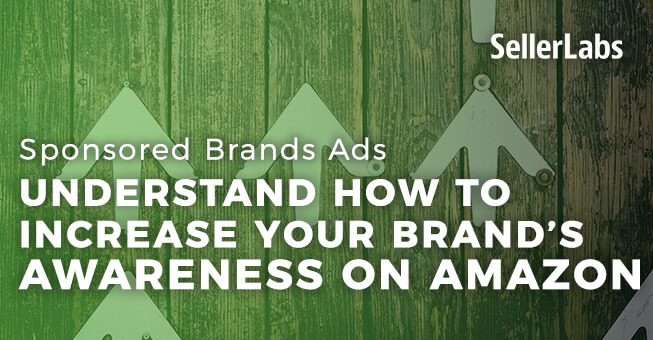Sponsored Brands Ads: Understand How to Increase Your Brand’s Awareness on Amazon
This blog post was originally contributed by Dan Crittenden, the eCommerce Dude at PorkRinds.com and Rudolph Foods.
Advertising on Amazon is as complicated as you make it. Gain an understanding of how to use Sponsored Brands Ads to increase awareness of your brand on Amazon.
When it comes to advertising your products and promoting your brand online there seems to be a myriad of ways for accomplishing this. The best way to start advertizing on Amazon is with Ignite.
Fortunately, Amazon is doing its best to simplify how brands advertise their products on its site. Amazon Advertising offers brands Sponsored Products, Sponsored Brands and Stores as the top three methods for promoting their wares. And all three play different roles in the Amazon buyer-purchase funnel. In this post, I want to help you understand Sponsored Brands Ads, as well as how and where they fit into your advertising strategy.
Sponsored Brands Ads Overview
Initially known as Headline Search Ads, Sponsored Brands Ads were exclusively available in Vendor Express and Vendor Central through Amazon Marketing Services (AMS). Amazon added Sponsored Brands Ads to Seller Central August 2017.
Sponsored Brands Ads are headline ads displayed at the top of a search results page on Amazon. Typically, the brand’s logo is shown along with a slogan and three different products offered from the brand.
Sellers need to be enrolled in Amazon’s Brand Registry program in order to use Sponsored Brands Ads.
On September 5, 2018, Amazon changed the name of “Headline Search Ads” to “Sponsored Brands Ads,” as well as Amazon Marketing Services to Amazon Advertising.
Key Aspects of Sponsored Brands Ads
The main differentiators of Sponsored Brands Ads are:
- Enrollment in Amazon’s Brand Registry program is required
- Placement at the top of the search results page
- The brand’s logo is present
- Three different products—not variations—are displayed
- Call to action link that goes to an Amazon Stores page
- 50-character headline max
- A shopper can click any one of the three products to visit the specific detail page
- Ads are keyword-based and pay-per-click
- Uses broad, phrase, or exact keyword match types
- No negative keyword match type available
- Higher CPC compared to Sponsored Brands Ads
The Buyer-Purchase Funnel for Amazon Advertising
Think back to the last time you made an Amazon purchase. Chances are it was something that you had been thinking about buying for a short or extended period of time. In marketing and advertising, there is a popular concept known as the “funnel,” which is typically composed of four levels:
- Top: Awareness
- Top Middle: Consideration
- Bottom Middle: Decision/Purchase Intent
- Bottom: Retention & Advocacy
Not everyone buys things in these stages, but bigger items usually take longer for people to pull the trigger on. Sponsored Brands Ads were designed for the “awareness” stage at the top of the funnel. This is because they broadly promote a brand and its products—not just one product. And the keyword targeting tends to be much more broadly focused.
Advertising Costs of Sponsored Brands Ads
We ran a Sponsored Brands and Sponsored Products campaign for five months to get a general overview of the differences in advertising costs. We had a $5,000 budget for each ad type (or $1,000 a month) and used the same keyword match type targeting. Here are the results:
Sponsored Brands Ad Campaign
| Time | Budget | Impressions | Clicks | CPC | Ad Spend | Sales | ACoS% | Profit |
| 5 months | $5,000 | 980,050 | 4,871 | $0.97 | $4,998.33 | $15,010.34 | 33.30% | $10,012.01 |
Sponsored Products Ad Campaign
| Time | Budget | Impressions | Clicks | CPC | Ad Spend | Sales | ACoS% | Profit |
| 5 months | $5,000 | 455,605 | 157 | $1.98 | $79 | $303.40 | 26.07% | $224.40 |
Our Sponsored Brands Ad received more than double the number of impressions. This makes sense since it sat at the top of the search results page. The number of clicks for the Sponsored Brands Ad matches what you’d expect for a banner ad targeting high traffic volume keywords.
The Sponsored Brands Ad had almost double the number of impressions compared to the Sponsored Products Ad. The Sponsored Brands Ad had nearly 5,000 clicks compared to the 157 on the Sponsored Products Ad. The Sponsored Brands Ad was much more expensive but it yielded a much higher profit, and it reached its daily budget limit of $33 almost every day.
Sponsored Brands Ads are effective but expensive. Use them only if you have the money to spend. And with increasing competition daily on Amazon, it will be more difficult to hit these kinds of numbers from day one.
Final Takeaway
Use every advertising option Amazon has made available to brands! I can’t stress this enough. If you’re only running Sponsored Products Ads, then you’re missing out on huge opportunities—Sponsored Brands Ads being the most obvious.
Understand where each advertising tactic fits into your Buyer-Purchase Funnel. Knowing when and where to run ads will move shoppers along their buying process and hopefully turn them into customers.
Amazon isn’t the only one that’s simplifying advertising for brands and sellers. Our Ignite Amazon Advertising tool lets you manage your Sponsored Brands Ads alongside your Sponsored Products Ads. This means you no longer have to bounce between Seller Central and Ignite, which is a huge time saver. Yay for less toggling!
But don’t just take my word for it.
